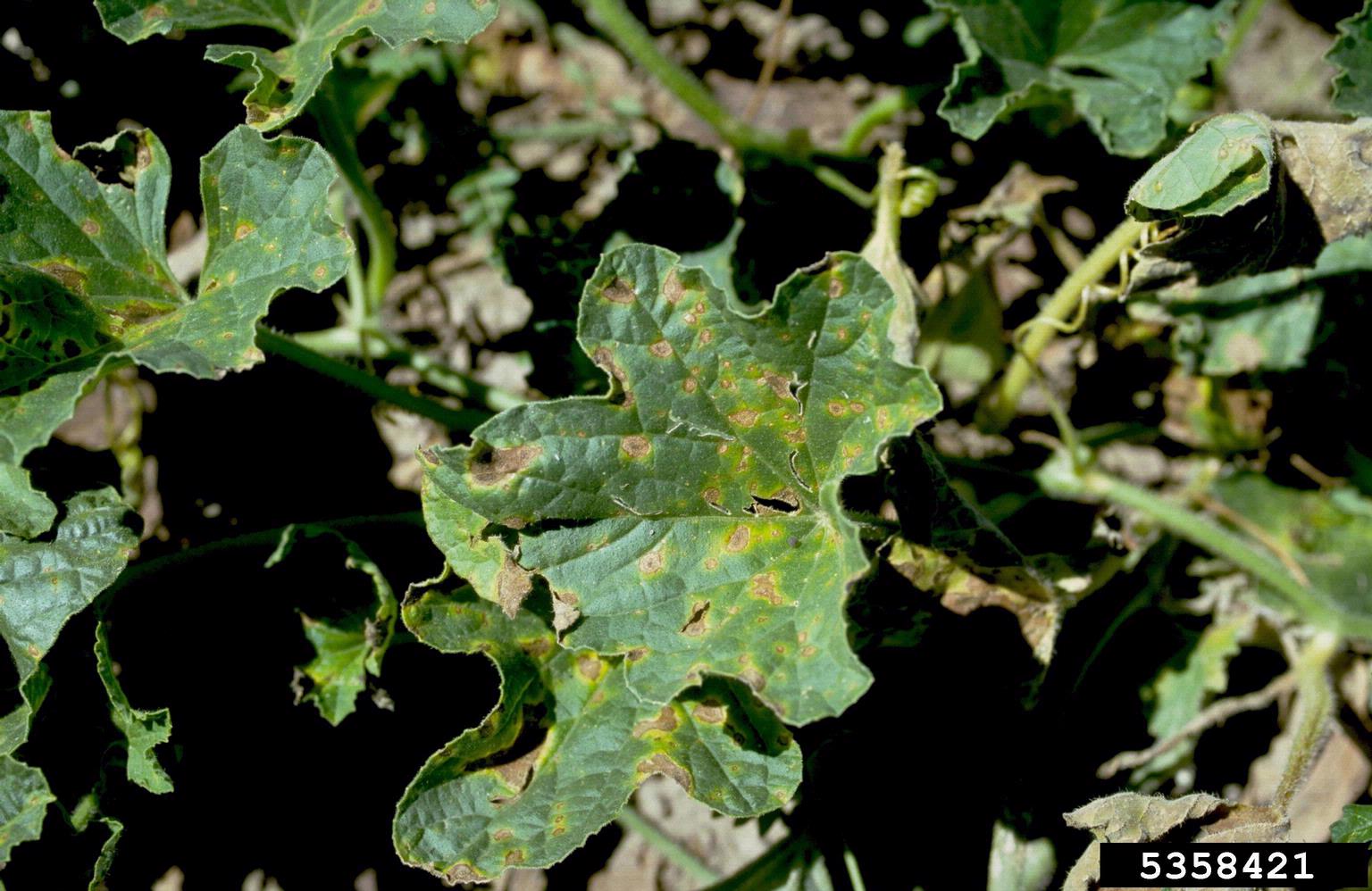Watermelon Alternaria Leaf Spot Control – Treating Leaf Blight Of Watermelon Crops


Alternaria leaf blight is a common fungal disease of plants in the cucurbit species, which includes gourds, melons, and squash. Watermelons are specifically affected by this disease. In this article we will take a closer look at the symptoms of watermelon Alternaria leaf spot, as well as disease control strategies for Alternaria of watermelons.
Recognizing Alternaria of Watermelon Leaves
Alternaria leaf blight is caused by the fungal agent Alternaria cucumerina, whose spores are carried on wind and water, when weather conditions become favorable for its spore growth. These favorable conditions are usually late spring to midsummer when cool, wet spring weather quickly turns to warm, humid, summer weather. Leaf blight of watermelons can overwinter in garden debris. As spring or early summer temperatures rise steadily between 68 and 90 degrees F. (20-32 C.), the fungus begins to produce reproductive spores which are carried from plant to plant by the breeze or splashing rain. These spores have a particularly easy time accumulating on and infecting plant tissues that are damp from dew or humidity. Symptoms of watermelon Alternaria leaf spot will begin as small gray to brown spots on the older leaves of watermelon plants, which are the common initial symptoms of many fungal diseases. However, with Alternaria leaf blight, these first small lesions oftentimes have a light green to yellow, water-soaked ring around the spot, which can appear halo-like. The foliar lesions of leaf blight of watermelon plants can grow to just under a half inch (1 cm.) in diameter. As they grow, the center and “halo” grow darker and more concentric rings form, giving the lesions a bullseye or target-like appearance, which contributes to this disease’s common name, target leaf spot. Infected leaves will wilt and curl upward like a cup, before withering away.
How to Manage Watermelons with Alternaria Leaf Spot
Alternaria of watermelons rarely causes lesions to form on the fruit, but if it does, they are usually brown to gray sunken lesions. Rapid defoliation is usually the main cause of fruit damage by Alternaria leaf blight. Without their protective canopy of dense watermelon leaves, fruit may succumb to sunscald and wind damage. Oftentimes, fruit can still be harvested from infected plants if gardeners use early maturing varieties or provide the fruit with some sun protection, such as garden shade canopies or properly timed shading companion plants. Prevention is the best way to control Alternaria of watermelons. After an outbreak has occurred in a garden bed, all garden debris should be cleaned out and disposed of thoroughly. Garden tools should also be sanitized. It is then recommended that you rotate watermelons or other susceptible cucurbits out of that location for two years. Crop rotation in vegetable gardens is always a good way to control the re-occurrence of diseases that affect specific host plants. When leaf blight of watermelon plants is present on fruiting plants in midsummer, biweekly applications of fungicides may control the disease enough to make it to harvest. Fungicides which contain azoxystrobin, boscalid, chlorothalonil, copper hydroxide, or potassium bicarbonate have shown effectiveness in controlling watermelon Alternaria leaf spot when used regularly and in combination with proper sanitary practices.
Sign up for the Gardening Know How newsletter today and receive a free copy of our e-book "How to Grow Delicious Tomatoes".

Darcy is a former contributor to Gardening Know How. She is a professional landscape designer and gardening writer with experience in plant sales. An avid gardener, Darcy has a passion for sharing practical tips to help others grow.